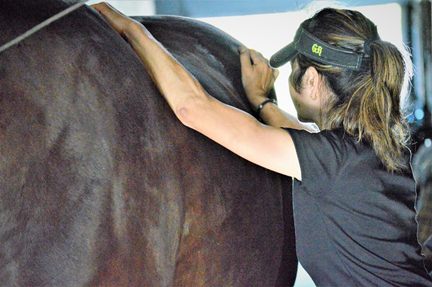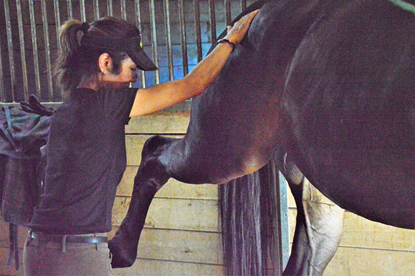Myofascial Release
- Verna Lum
- Jul 25, 2018
- 1 min read
Updated: Aug 1, 2018
Acupressure and deep tissue manual therapy releases tension at the trigger points within muscles bellies, whereas myofascial release, reduces tension in the fascia. Fascia is a clear, gelatinous form of connective tissue that envelops and supports all muscles, bones, organs, nerves, blood vessels, tendons and ligaments.
Healthy fascia is soft and flexible and runs head to tail. Therefore, when injury or overstraining occurs, the fascia can develop adhesions (which feels ropey and taunt) that will restricts the muscles ability to fully extend and contract.
Because fascia runs head to tail, injury in one area of the fascia (for example across lower back) could have a secondary restriction and pain in the stifle. It is like dropping a stone in a pond. The ripple of waves is not located only where the stone is dropped, but across the entire pond.
Studies have shown that a fascia restriction can impede movement by as much as 30%, with a corresponding high risk of injuries in tendon and ligaments as well.
Our treatments will begin with acupressure, trigger point release, followed by myofascial stimulation, deep tissue and friction massage followed by gentle stretch. These combined modalities will increase circulation, remove toxins, speed up healing, improve flexibility and help safeguard against future soft tissue injuries.
1) Acupressure and myofascial release applied to gluteus medius muscle.
2) Stretching following myofascial release of gluteal muscles (butte muscle).






Comments